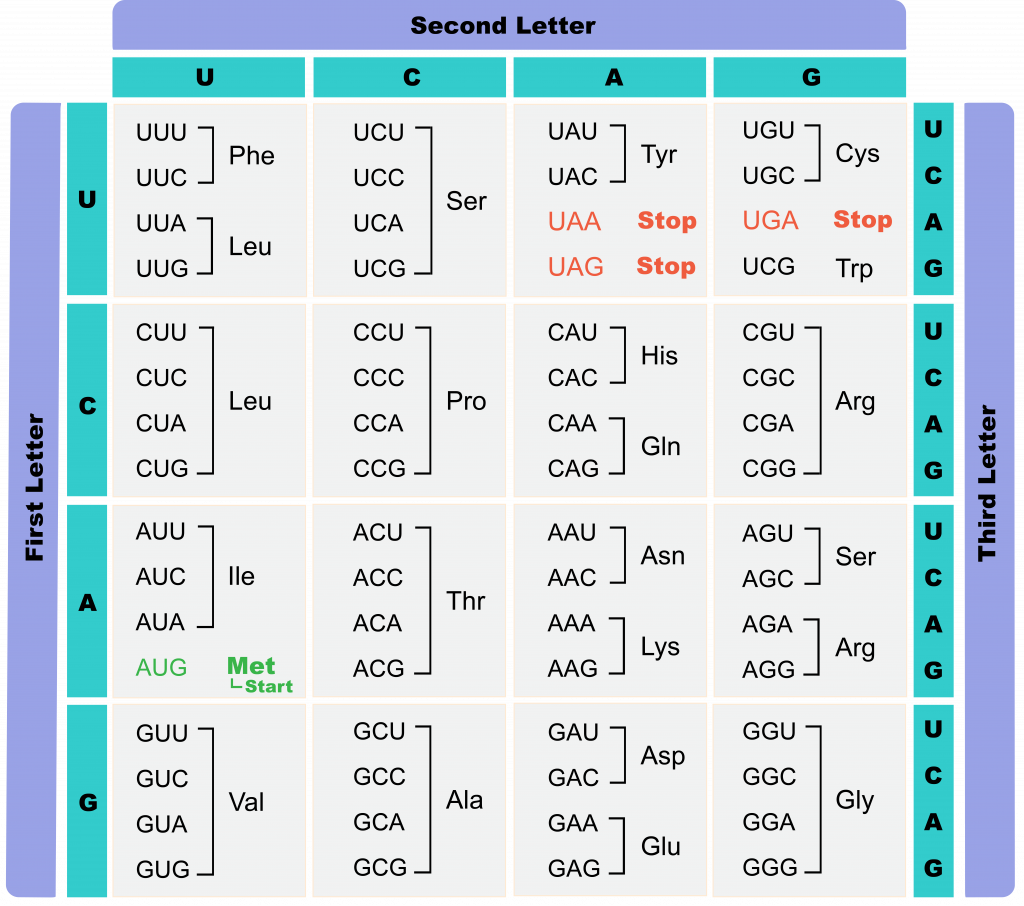5.8 Using the genetic code
DNA is transcribed into RNA, which is translated into a polypeptide. Simply, a series consisting of four bases (A,G,C,T) is transcribed and translated into a series of 20 amino acids. This shift from one chemical language to another is accomplished through the genetic code, a set of precise rules that govern how every possible sequence of three RNA nucleotides (a codon) corresponds to a specific amino acid.
The genetic code can be read as a table, whereby each three-letter codon is broken into its first, second and third RNA bases. These bases converge on a single amino acid, and this amino acid is the actual translated product of the original DNA nucleotides. For example, figure 6 tells us that the amino acid tyrosine (Tyr) corresponds to the mRNA codon UAC. The genetic code also contains an initiation (or “start”) codon, AUG, and three “stop” codons: UAA, UAG, UGA. The initiation codon also codes for the amino acid Methionine. Methionine (with Tryptophan) is one of only two amino acids that correspond to a single codon. Most amino acids correspond to several three- base `sequences. In other words, the genetic code can be very redundant.

Check Yourself
What else does DNA do?
Only 2% of the human genome codes for proteins, leading some scientists to refer to the remaining nucleotides as “junk DNA.” However, this moniker may be too harsh. Rather, it seems that much of your DNA is regulatory, and controls how much, or what kind, of a protein is synthesized. Some DNA is part of a gene that was active in our ancestors, but is no longer functional; for example, humans have several vestigial olfactory genes, suggesting that modern humans are not as dependent on our sense of smell as were our hominid ancestors. And some DNA was adopted from viruses that attacked human ancestors; these endogenous retroviruses say a lot about our evolutionary past with pathogens, but are not functioning genes.
It is also probable that many DNA sequences have functions yet to be identified. In 2012, a consortium of scientists reported on a decade-long project, The Encyclopedia of DNA Elements (ENCODE), suggesting that over 80% of DNA is somehow functional. ENCODE’s results have been applauded and criticized, a span of responses that highlights how DNA science is still in its infancy. Regardless of the exact percentages, it is clear that while much of our DNA does not directly code for protein, the human genome is far from being packed with junk.

